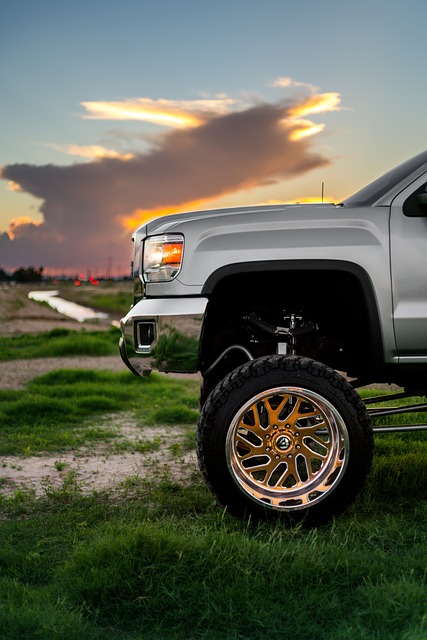Leaf springs are essential components in 4×4 vehicles, providing stability and control over rugged terrain. This article explores the fundamentals of leaf springs, their types, and the materials used in their construction. We introduce Brownsville-4×4-shop, a specialist in leaf spring repairs and upgrades, highlighting the importance of regular maintenance. You’ll discover factors to consider when choosing the right leaf springs for your vehicle, tailored to specific make, model, terrain, and driving conditions, ensuring optimal performance and handling.
- Understanding Leaf Springs: The Basics
- – Definition and function of leaf springs in 4×4 vehicles
- – Types of leaf springs: conventional vs. modern designs
Understanding Leaf Springs: The Basics

Leaf springs are an essential component in many vehicles, particularly those designed for off-road adventures or rugged terrain. Often found in 4x4s and other Brownsville-4×4-shop specialized vehicles, these flexible metal components serve as the backbone of a vehicle’s suspension system. Their primary function is to absorb shock and provide a smooth ride over uneven surfaces.
Each leaf spring consists of multiple thin, rectangular plates of steel stacked on top of each other, allowing for bending and flexibility. This design enables them to compress or extend under various driving conditions, ensuring that the wheels maintain contact with the road surface at all times. The setup also helps in distributing the vehicle’s weight evenly across the axles, enhancing traction and control during challenging drives.
– Definition and function of leaf springs in 4×4 vehicles

Leaf springs in 4×4 vehicles serve as a fundamental component for ensuring optimal performance and stability on varied terrain. These flexible, curved strips of metal act as an essential suspension element, connecting the chassis to the wheels. By absorbing shocks and allowing for independent wheel movement, leaf springs contribute significantly to the overall handling and comfort of the vehicle, especially during off-road adventures. A well-maintained 4×4 from a reputable Brownsville-4×4-shop ensures that these leaf springs remain in top condition, enhancing both safety and driving pleasure.
– Types of leaf springs: conventional vs. modern designs

Leaf springs come in two main design types: conventional and modern. Conventional leaf springs, which have been used for decades, are characterized by their solid construction using high-quality steel to provide robust performance. They are reliable and well-understood, making them a popular choice among off-road enthusiasts seeking a classic setup. On the other hand, modern leaf spring designs offer advancements in materials and engineering. These often incorporate lighter, yet stronger alloys like stainless steel or aluminum, resulting in improved vehicle dynamics and better fuel efficiency.
Brownsville-4×4-shop offers a range of both conventional and modern leaf springs tailored for various 4×4 applications. Modern designs may include features such as progressive rate springs, which offer varying spring rates along their length, providing enhanced comfort on the road while maintaining excellent off-road performance. These innovations highlight the continuous evolution of leaf spring technology to meet the demands of today’s adventurous drivers.
Leaf springs, whether conventional or modern, play a vital role in the performance and durability of 4×4 vehicles. Understanding their function and exploring the options available, like those you might find at a Brownsville-4×4-shop, can help ensure your vehicle’s stability and handling are optimized for any terrain.



